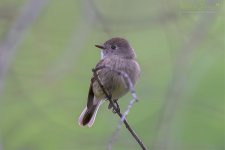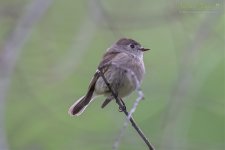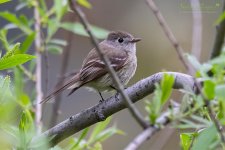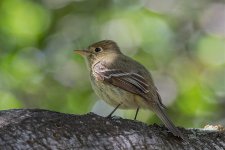-
Welcome to BirdForum, the internet's largest birding community with thousands of members from all over the world. The forums are dedicated to wild birds, birding, binoculars and equipment and all that goes with it.
Please register for an account to take part in the discussions in the forum, post your pictures in the gallery and more.
You are using an out of date browser. It may not display this or other websites correctly.
You should upgrade or use an alternative browser.
You should upgrade or use an alternative browser.
Gray Vireo (San Dimas, CA, today) (1 Viewer)
- Thread starter JohnKoerner007
- Start date
More options
Who Replied?JohnKoerner007
Wildlife Photographer
Nobody? 
JohnKoerner007
Wildlife Photographer
ID Auction ... 
JohnKoerner007
Wildlife Photographer
Agree on the “not vireo” statement
Niels
Agreeing on what "it's not" doesn't really help to define what is *IS* ...
I agree it's not an ostrich, or an oriole, also ... but it doesn't help me get closer to an ID o

I was going to say that Hammond's looks good but on that species only the outer web of outer tail feathers would be grayish white. Here it is clearly the entire outer tail feathers that are whitish. That shoots down that species, and I suspect the entire empidonax group. Unless, of course, it is a bird with partial leucism.
Niels
Niels
JohnKoerner007
Wildlife Photographer
I was going to say that Hammond's looks good but on that species only the outer web of outer tail feathers would be grayish white. Here it is clearly the entire outer tail feathers that are whitish. That shoots down that species, and I suspect the entire empidonax group. Unless, of course, it is a bird with partial leucism.
Niels
Thank you very much for the detail.
I agree it's kind of a "catch-all," unremarkable bird "in the zone" of what you and others are describing.
I will try to post more photos if this may help.
Thank you for your time.
? Hammond's flycatcher? Small stubby bill, no real eye ring, dark. Definitely not a vireo IMHO
Bill stubby but not (IMO) stubby enough for Hammond’s. Dusky is still my best guess.
I was going to say that Hammond's looks good but on that species only the outer web of outer tail feathers would be grayish white. Here it is clearly the entire outer tail feathers that are whitish. That shoots down that species, and I suspect the entire empidonax group. Unless, of course, it is a bird with partial leucism.
Niels
The feathers are backlit which makes it hard to judge their whiteness or lack thereof, but it looks to me like at least on the birds left outer tail feather, the outer web is much paler than the rest of the feather.

The feathers are backlit which makes it hard to judge their whiteness or lack thereof, but it looks to me like at least on the birds left outer tail feather, the outer web is much paler than the rest of the feather.
The front of the bird seems rather well lit for that?
Niels
JohnKoerner007
Wildlife Photographer
The front of the bird seems rather well lit for that?
Niels
I agree, I was there. No back-lighting ... white trim on tail from underneath.
Here are a couple more shots that may help ...
Attachments
JohnKoerner007
Wildlife Photographer
Very tiny bird, btw ... nowhere near the size of a kingbird ... much smaller than a Black Phoebe.
I agree, I was there. No back-lighting ... white trim on tail from underneath.
But not apparently from the side where I would expect to see some more evidence of white if the shots from underneath were showing something real (so strongly whitish). Two more points in favour of Hammond's: tail notched and primary projection long (short in dusky). Neither of the 2 refs I have to hand mention tail feather pattern except to say that it's notched but one, Sibley, illustrates whitish/greyish outer feathers.
JohnKoerner007
Wildlife Photographer
But not apparently from the side where I would expect to see some more evidence of white if the shots from underneath were showing something real (so strongly whitish).
If it was back-lit, the wingtip would have a similar cast, which it absolutely does not.
I am no bird expert, but I am with photography, and the tail exhibits the color, white (or, non-color, actually :king
On the side-shot, the reason why the white isn't as pronounced is the tail isn't fanned, it's folded-straight in that shot, so no way to see the white underside.
Two more points in favour of Hammond's: tail notched and primary projection long (short in dusky). Neither of the 2 refs I have to hand mention tail feather pattern except to say that it's notched but one, Sibley, illustrates whitish/greyish outer feathers.
Interesting, thank you.
Last edited:

But not apparently from the side where I would expect to see some more evidence of white if the shots from underneath were showing something real (so strongly whitish). Two more points in favour of Hammond's: tail notched and primary projection long (short in dusky). Neither of the 2 refs I have to hand mention tail feather pattern except to say that it's notched but one, Sibley, illustrates whitish/greyish outer feathers.
As I wrote above, BoW says the outer vane is whitish grey, and the same is mentioned in the NatlGeo guide (edged grey). Maybe the color of the inner vane of this outer feather is so thin/weak that it becomes translucent under conditions such as these. I guess a ringer who have handled these would know.
Niels
JohnKoerner007
Wildlife Photographer
I appreciate everybody's input.
Looking at the range maps, the Hammonds doesn't seem as likely. I'm in Los Angeles County, and it's more in line with the range of the Dusky.
I have many other images I haven't shown, and in none of them does the tail appear that long, which appears to be characteristic of the Dusky. So I don't think it's a dusky, either. However I'm no expert.
That said, in none of the pictures is there a white dash in front of the eye, leading to the beak, as there is in the Dusky. There is also mention of a "long beak," light underneath, with "a black tip." I have images which show the underside of the beak, there is no black tip, nor is the beak long. It is light -colored, though.
Habitat and range-wise, and thanks to everyone's input, I'm beginning to believe this is a Pacific-Slope Flycatcher. The range maps match perfectly with where I was, as does the habitat description:
These birds are always in shaded areas, in the lower canyon, always by the San Dimas Canyon Creek. They seem to prefer a specific "shady oak" habitat.
Also, the bill is shorter as well as orange underneath. Here is a different photograph of a different example bird, taken on a different day, much different lighting, but in the identical area and same habitat.
I will try to post more pictures later this afternoon or evening.
Looking at the range maps, the Hammonds doesn't seem as likely. I'm in Los Angeles County, and it's more in line with the range of the Dusky.
I have many other images I haven't shown, and in none of them does the tail appear that long, which appears to be characteristic of the Dusky. So I don't think it's a dusky, either. However I'm no expert.
That said, in none of the pictures is there a white dash in front of the eye, leading to the beak, as there is in the Dusky. There is also mention of a "long beak," light underneath, with "a black tip." I have images which show the underside of the beak, there is no black tip, nor is the beak long. It is light -colored, though.
Habitat and range-wise, and thanks to everyone's input, I'm beginning to believe this is a Pacific-Slope Flycatcher. The range maps match perfectly with where I was, as does the habitat description:
These birds are always in shaded areas, in the lower canyon, always by the San Dimas Canyon Creek. They seem to prefer a specific "shady oak" habitat.
Also, the bill is shorter as well as orange underneath. Here is a different photograph of a different example bird, taken on a different day, much different lighting, but in the identical area and same habitat.
I will try to post more pictures later this afternoon or evening.
Attachments
Last edited:
JohnKoerner007
Wildlife Photographer
PS: I have been looking mostly at the NatGeo Guide, and (occasionally) the Kaufmann Guide.
In looking at the Sibley Guide, the range of the Hammonds' Flycatcher spreads all over my area under "migration," and the look matches what I am seeing repeatedly in the field. The bird presents as grayer more often than not, and never has a long tail.
I consistently see a short tail, that's notched, with varying degrees of white edges, depending on the angle. I retract my belief that it's a Pacific Slope.
The look of the Hammonds seems to match across all three field guides more than any of the others mentioned. The NatGeo guide showed it being a bit north of me, but the other two guides show the Hammonds with a migration range where I'm located.
Don't know if this helps.
In looking at the Sibley Guide, the range of the Hammonds' Flycatcher spreads all over my area under "migration," and the look matches what I am seeing repeatedly in the field. The bird presents as grayer more often than not, and never has a long tail.
I consistently see a short tail, that's notched, with varying degrees of white edges, depending on the angle. I retract my belief that it's a Pacific Slope.
The look of the Hammonds seems to match across all three field guides more than any of the others mentioned. The NatGeo guide showed it being a bit north of me, but the other two guides show the Hammonds with a migration range where I'm located.
Don't know if this helps.
Users who are viewing this thread
Total: 2 (members: 0, guests: 2)







